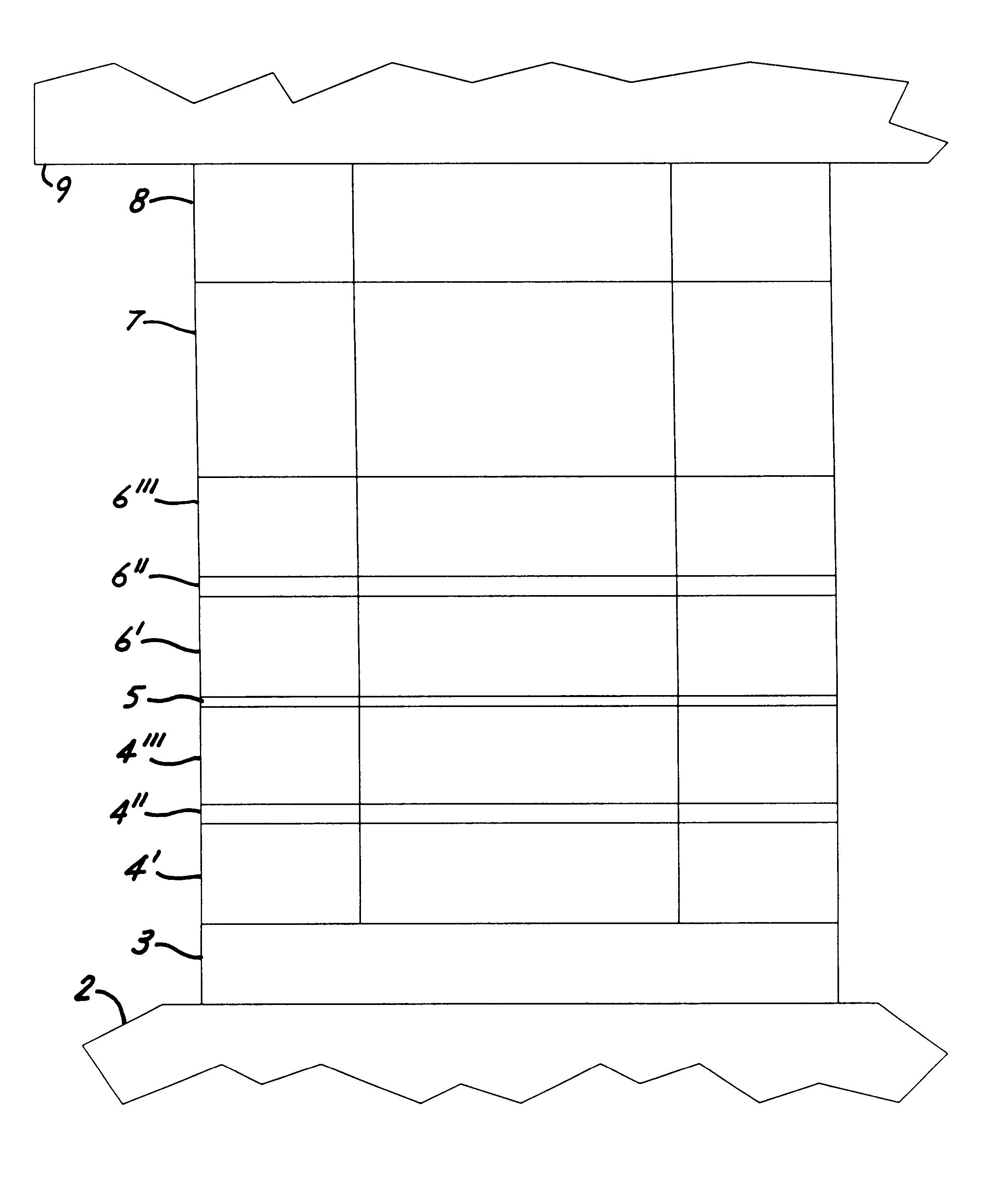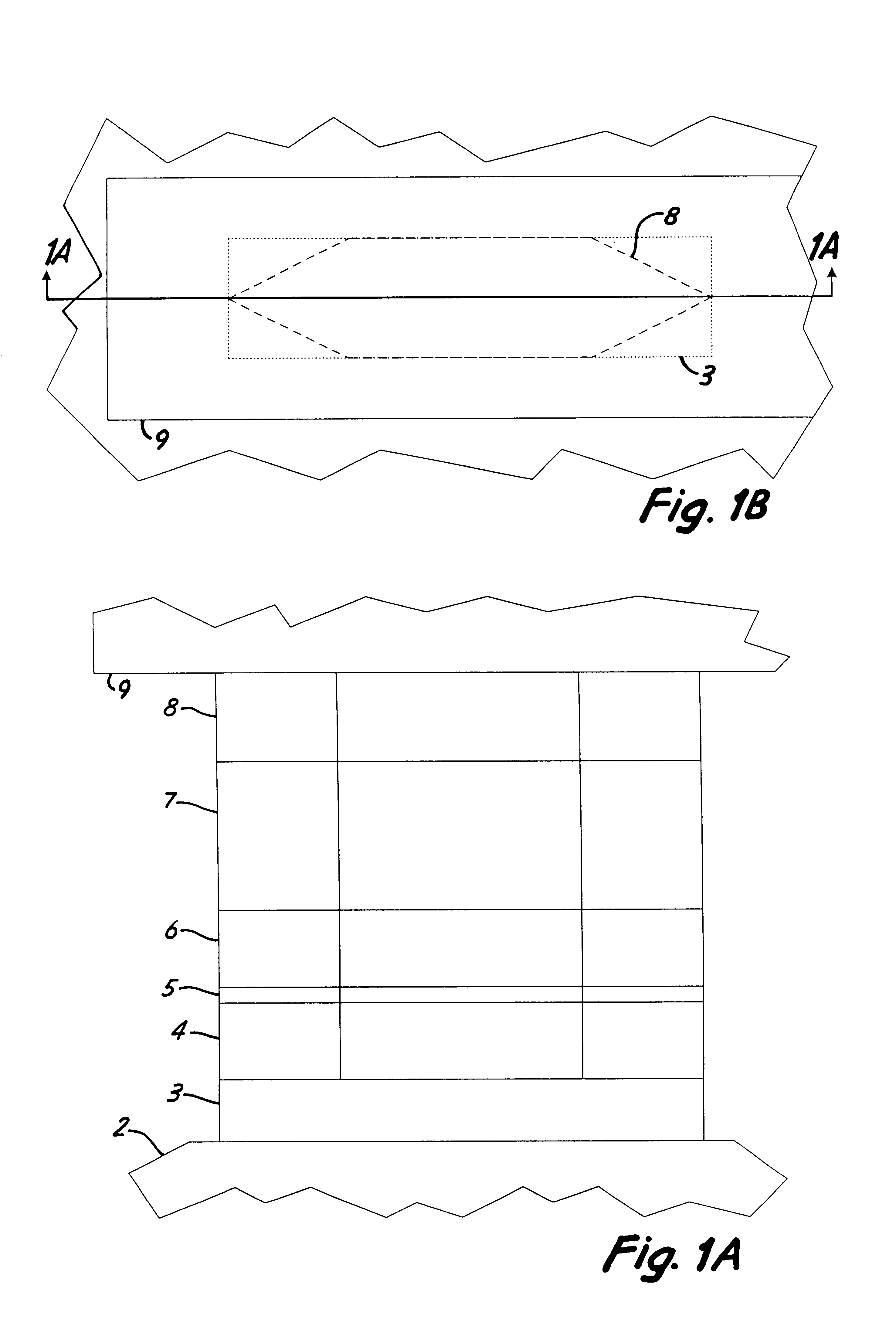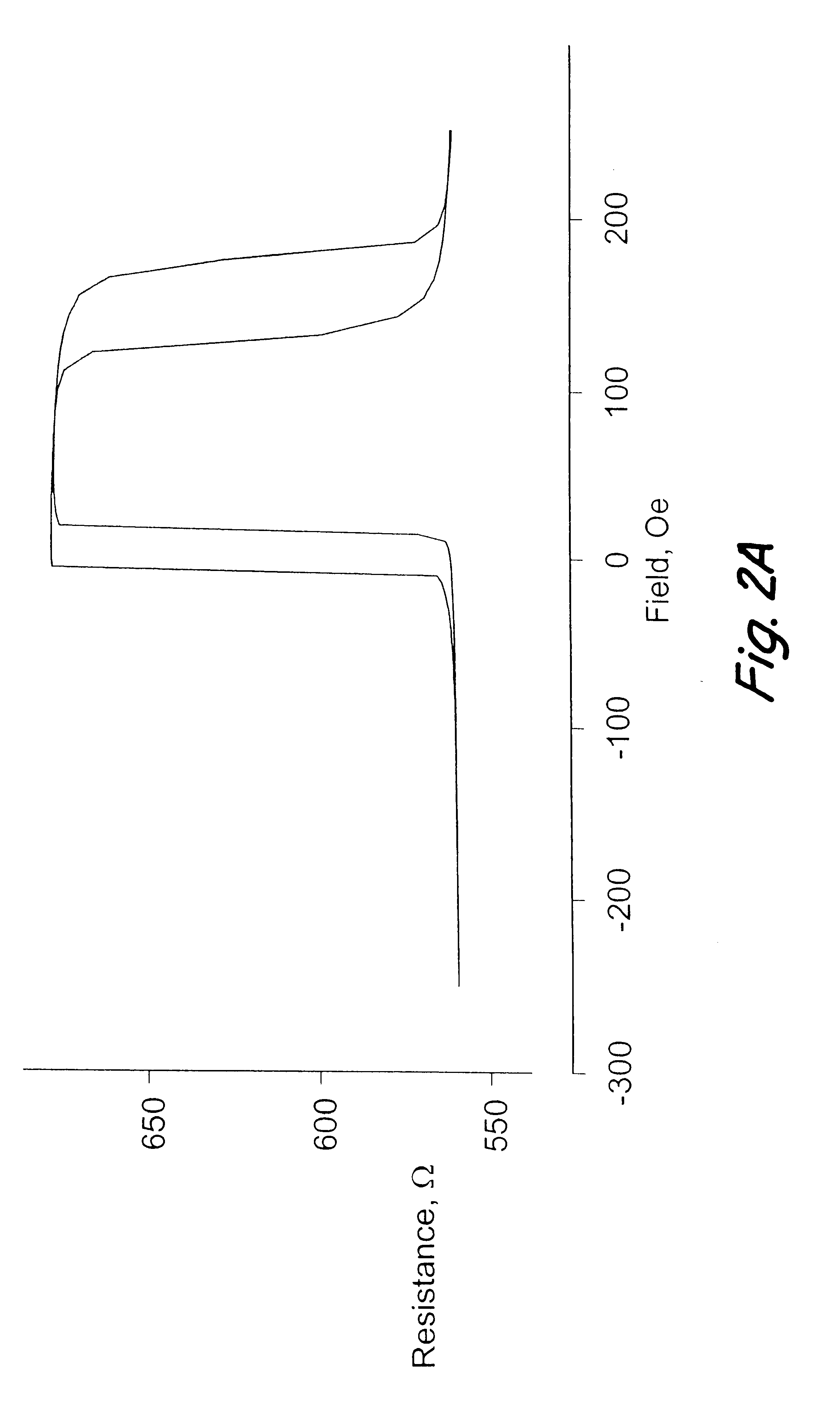Current switched magnetoresistive memory cell
- Summary
- Abstract
- Description
- Claims
- Application Information
AI Technical Summary
Benefits of technology
Problems solved by technology
Method used
Image
Examples
Embodiment Construction
In high-density magnetic memory cell arrays, a common problem is to make the memory cells magnetically stable (so they retain information indefinitely without requiring energy) while also being easily switchable between alternative memory states as the basis for storing binary bits of data. The switching of one cell must not disturb the magnetic state of another nearby cell in the array. Such highly controllable switching events are desired to be performed using as little time and energy as possible.
In the case of both spin valve and magnetic tunnel junction devices described above, the purpose of the spacer layer is to keep the magnetizations of the free and fixed magnetic material layers separated from coupling to one another while allowing passage of electrons between these two layers. In a properly constructed spin valve or magnetic tunnel junction device, the passage of electrons through the metallic Cu spacer layer 5, or the insulating Al.sub.2 O.sub.3 spacer layer 5, does not...
PUM
 Login to View More
Login to View More Abstract
Description
Claims
Application Information
 Login to View More
Login to View More - R&D
- Intellectual Property
- Life Sciences
- Materials
- Tech Scout
- Unparalleled Data Quality
- Higher Quality Content
- 60% Fewer Hallucinations
Browse by: Latest US Patents, China's latest patents, Technical Efficacy Thesaurus, Application Domain, Technology Topic, Popular Technical Reports.
© 2025 PatSnap. All rights reserved.Legal|Privacy policy|Modern Slavery Act Transparency Statement|Sitemap|About US| Contact US: help@patsnap.com



